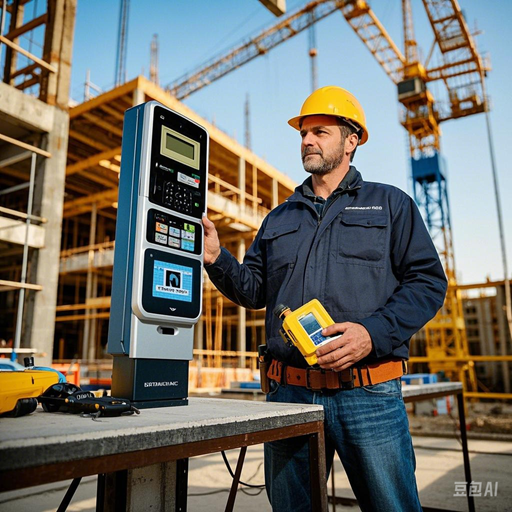5 Effective Ways to Track Employee Hours

5 Effective Ways to Track Employee Hours
Why Tracking Employee Hours Is Crucial
Did you know? Businesses lose an estimated $110 billion annually due to inaccurate time tracking in the U.S. alone. From remote workers forgetting to clock in to payroll calculation errors, poor time management directly impacts efficiency and costs.
Employees are the backbone of any successful organization, and accurately tracking their time and attendance is essential—not just for payroll, but for budgeting, legal compliance, and operational efficiency. In today’s dynamic work environment, where remote work and flexible schedules are increasingly common, businesses need reliable systems to track employee hours.
The Importance of Accurate Time Tracking
Accurate time tracking is critical for all types of workers—whether hourly employees, salaried professionals, or hybrid teams. Here’s why it matters:
- Payroll Accuracy: Reduces errors and ensures fair payment for all employees.
- Legal Compliance: Helps meet labor law requirements and avoid penalties.
- Efficiency and Productivity: Provides insights into how time is spent, allowing for process optimization.
- Cost Control: Improves budget planning and eliminates unnecessary overtime expenses.
- Employee Transparency: Builds trust by offering clear records of hours worked and compensation.
5 Effective Time Tracking Methods
1. Physical Time Clocks
Physical time clocks remain a go-to solution for many businesses, especially in industries like manufacturing and retail. Employees clock in and out by swiping a badge, entering a PIN, or using biometric verification (e.g., fingerprint or facial recognition). Modern time clocks often integrate with payroll systems for smoother management.
- Pros: Simple to use, reliable for on-site teams.
- Cons: Not suitable for remote or distributed teams; limited scalability.
- Example: A factory upgraded to biometric time clocks and reduced punch-in errors by 25%.
2. Mobile Apps
Mobile apps are a game-changer for modern workplaces, offering employees the flexibility to clock in and out from anywhere via their smartphones. Many apps also include GPS tracking to confirm the employee’s location.
- Pros: Flexible and ideal for remote teams or employees working in multiple locations.
- Cons: Employees may forget to clock in, leading to incomplete records.
- Example: A remote sales team used a time-tracking app to reduce payroll processing time by 50%.
3. Geotracking
Geotracking uses GPS technology to verify that employees clock in from approved locations, such as a job site or office. This prevents issues like clocking in while commuting or from home.
- Pros: Improves accuracy and prevents misuse.
- Cons: May raise privacy concerns; requires employee consent.
- Example: A construction firm implemented GPS tracking and saved thousands of dollars per month by reducing unauthorized overtime.
4. Biometric Systems
Biometric systems such as fingerprint, facial, or iris recognition ensure secure and accurate time tracking. These systems are particularly useful for industries where employees frequently switch tasks or positions.
- Pros: High security and eliminates buddy punching (clocking in for others).
- Cons: High initial cost and potential technical issues.
- Example: A multinational company adopted iris scanning for time tracking, reducing attendance errors by 90%.
5. Blended Solutions
For businesses with diverse teams, a blended solution can combine multiple methods. For example, office staff might use physical time clocks, while remote workers rely on mobile apps. All data is then integrated into a centralized database.
- Pros: Highly flexible and adaptable to various work environments.
- Cons: Complex setup and higher initial cost.
- Example: A tech company implemented a blended system to manage 500 employees worldwide, streamlining payroll and time tracking.
How to Choose the Right Time Tracking System
Selecting the right time tracking system requires careful consideration of your organization’s needs. Ask yourself these key questions:
- Is it easy to use? Can employees quickly adapt to the system?
- Does it provide real-time insights? Can you monitor labor costs and schedules instantly?
- Does it integrate with existing systems? For example, payroll or HR software.
- Is it scalable? Can the system grow with your business?
- Does it address privacy and compliance concerns? For instance, does it comply with GDPR or local labor laws?
The Future of Time Tracking
Time tracking technology is evolving rapidly, with several trends shaping the future:
- Artificial Intelligence (AI): Automates time tracking, analyzes work patterns, and optimizes scheduling.
- Wearable Devices: Smartwatches and other wearables make clocking in effortless.
- Geofencing: Automatically clocks employees in or out when they enter or leave designated areas.
- Real-Time Data Sync: Ensures instant updates across platforms, eliminating delays.
- Employee Self-Service Tools: Allows employees to view hours worked, request time off, and adjust schedules independently.
- Advanced Workforce Analytics: Provides insights into productivity, engagement, and workforce trends.
Conclusion
Accurate time tracking is a cornerstone of any successful business. From traditional punch clocks to AI-powered solutions, there’s a method to suit every organization’s needs. The goal is to create a more efficient and transparent work environment while leveraging modern tools to improve productivity and reduce costs.
Choose the right system for your business, involve your team in the process, and embrace the power of technology to drive success.